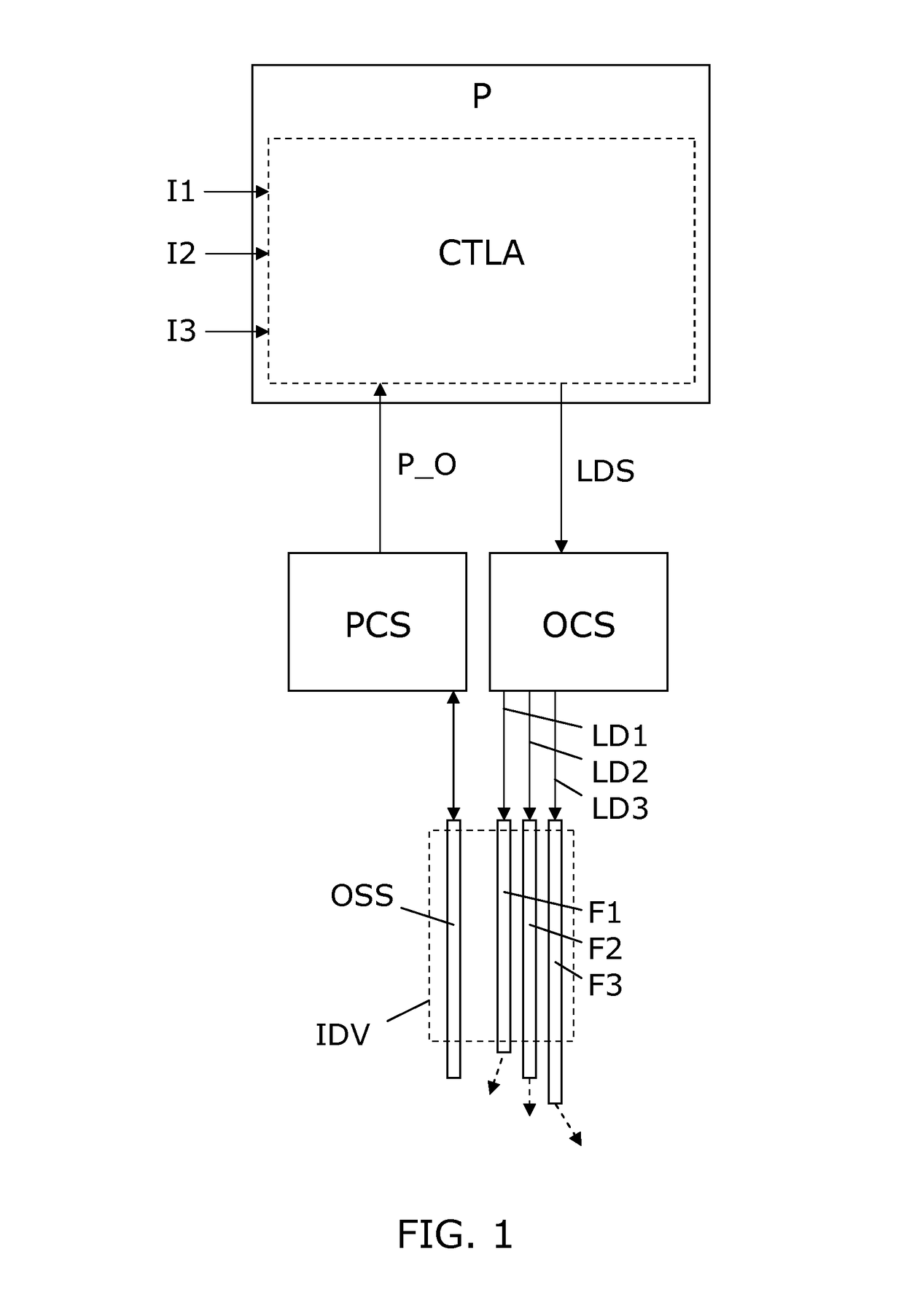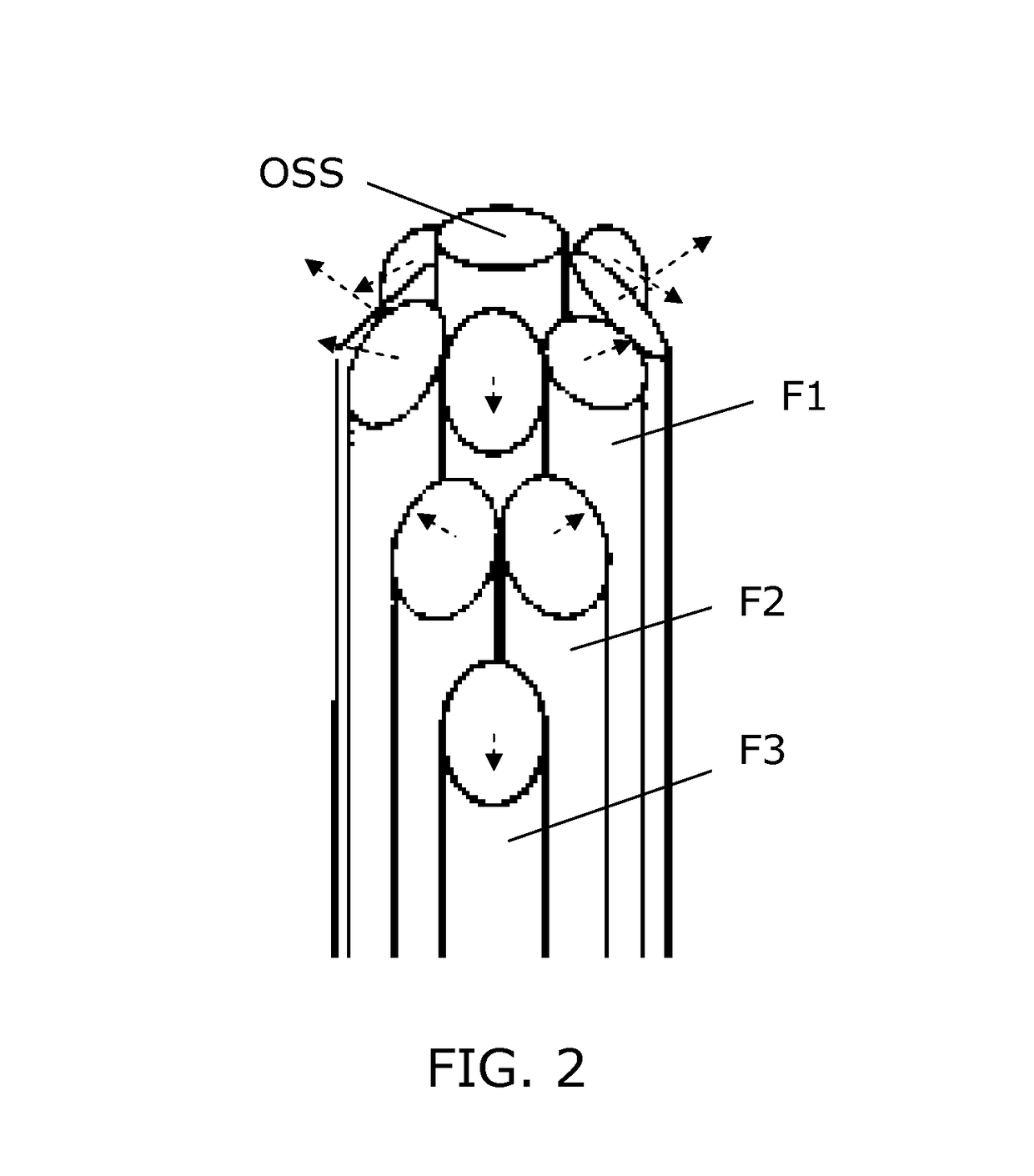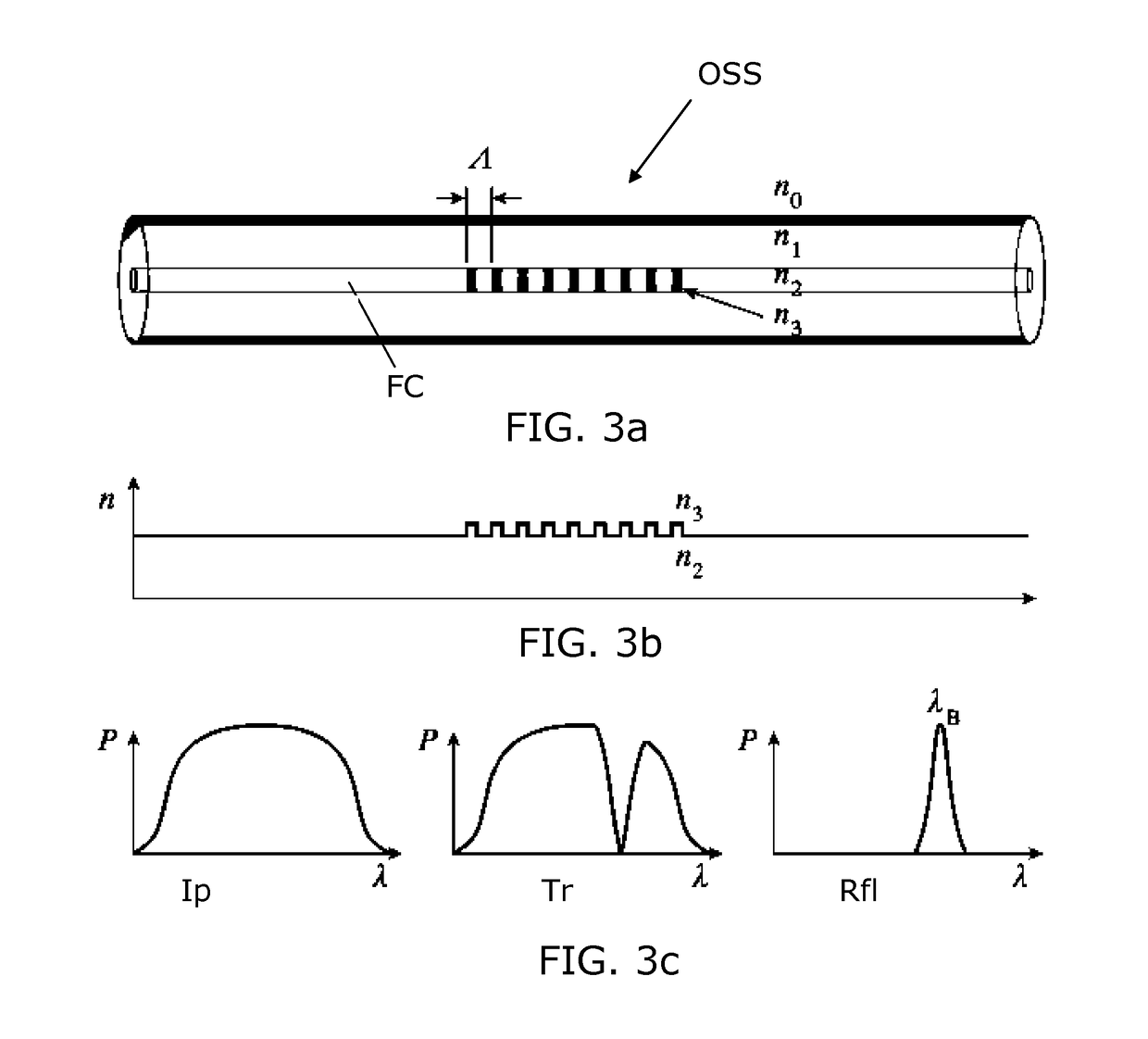Guided photodynamic therapy
a technology of photodynamic therapy and light dose, which is applied in the field of medical equipment for and a method of photodynamic treatment, can solve the problems of difficult to administer the required light dose in a proper fashion, difficult to control and measure the concentration of photosensitizer drugs in the tissue, and unaffected tumor cells
- Summary
- Abstract
- Description
- Claims
- Application Information
AI Technical Summary
Benefits of technology
Problems solved by technology
Method used
Image
Examples
Embodiment Construction
[0051]FIG. 1 illustrates a simple block diagram of a PDT system embodiment according to the invention. An interventional device IDV in the form of an elongated needle, catheter, endoscope or the like, is arranged for insertion into the body, e.g. a tumor, of a patient to be treated with PDT. The interventional device IDV includes a bundle of optical fibers F1-F3 which are individually accessible in one end, and in the opposite end they have fiber ends which serve as light exit ports. The optical fibers F1-F3 are spatially distributed and with fiber ends serving to distribute light in different directions (indicated by dashed arrows) which allows a mix of light from the fiber ends to generate a resulting complex light distribution. For illustration, only 3 fibers F1-F3 are shown, but in practical applications any number of two or more can be used, e.g. 5-10, 10-30, or even more fibers can be used, so as to allow generation of a complex light distribution suited to provide light to a ...
PUM
 Login to View More
Login to View More Abstract
Description
Claims
Application Information
 Login to View More
Login to View More - R&D
- Intellectual Property
- Life Sciences
- Materials
- Tech Scout
- Unparalleled Data Quality
- Higher Quality Content
- 60% Fewer Hallucinations
Browse by: Latest US Patents, China's latest patents, Technical Efficacy Thesaurus, Application Domain, Technology Topic, Popular Technical Reports.
© 2025 PatSnap. All rights reserved.Legal|Privacy policy|Modern Slavery Act Transparency Statement|Sitemap|About US| Contact US: help@patsnap.com



